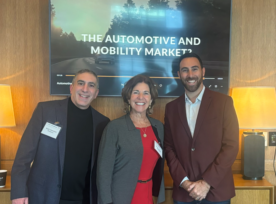One of my favorite memories as a kid was going to the car dealership with my dad and watching him beat up (figuratively, of course) the sales associate who was trying to sell him a new truck. The sales associate wanted one price; my father wanted a very different price. Round and round they went, spending hours and oxygen as they both attempted to get to a place where they felt good about the deal.
After time, they didn’t, and my dad and I got up and left. A few days later, the sales associate called my father up and said he was able to get the price he wanted, so we drove back and purchased the truck.
So, what’s the overall lesson here? Well, there’s a few. First, if you’re an automotive sales associate and you see my father coming – run. Second, that entire shopping experience took a ton of time, stress, and work.
And that’s my exact point here. The automotive shopping experience needs to change. Consumers don’t really want to haggle on price, back and forth, all day. We’re all too busy for that. We don’t really want to block off an afternoon and test drive a car when there may be just as good options to see how the car drives from the comfort of our home.
The future of automotive shopping will and should be driven by immersive, unified shopping experiences that remove friction completely. In that frame, here are three ways I see the automotive shopping experience changing for the better.
Immersive Test Drives
Imagine a world where you can pop on your AR headset, hop into the seat of the car of your choice and dynamically experience what it’s like to drive it from the comfort of your couch. Sounds pretty cool right? This type of experience isn’t that far off, especially when you look at the ability to test drive the vehicle then customize the interior, exterior, leather choices, wheel choices, paint choices, etc. Automotive manufacturers who can embrace immersive experiences like this will begin to attract customers who are on the go and don’t have time to pop in and spend hours at the dealership. Additionally, immersive doesn’t just mean test drives. Immersive also applies to in-person events, experiences, and get togethers that evoke our senses in a way that curates customer lifetime value.
Digitally Enabled Sales
There is no reason that we should have to go into a dealership to purchase a vehicle. Most of the deal, paperwork, and logistics needed can be done virtually through technology. Imagine a world where there’s a digitally enabled commerce experience that both the buyer and the sales associate have access to. They can start to work on the car deal together, virtually. If the customer drops off for any reason, dynamic re-marketing campaigns through extensive marketing technology can nurture the customer back into the buying process allowing the sales associate to run many deals simultaneously. This not-so-distant future will soon become a reality, and in some cases – it already is.
Dynamic Upsells, Through Personal Connection
Unified commerce is the ability of an organization to truly put the customer at the center of everything. Through technology, the organization can curate content and experiences based upon the actual behavior of that customer. Here’s an example. Recently, you purchased a new car and so far, you’re loving it. After about a year, you realize that the car may not be for you. However, you’re still a big fan of the brand overall so you decide to head back to their website where you’ve previously created a profile. You login and start to browse. In a unified world, the sales associate you worked with previously is notified of this behavior and can start to curate content and vehicles for you to look at. This dynamic upsell opportunity is led by technology, but supported by a human, and the personal connection you may have made previously with that sales associate. The idea here is to always be paying attention to the signals and hints consumers are providing through their actions in a way that helps nurture their goals and desires.
If this all sounds like a lot, well it should – because it is. However, the good news is that if you’re operating in this space today – you’ve already made investments in technology that can start you on the path to unified experiences. What’s critical however is that you start with where your customers’ journey is today and see how it might change and pivot tomorrow to help determine what technology investments you may need to make.
Remember, your brand should always aspire to be in the channels your customers are most active in. Keep a close eye on how technology is evolving and find ways to leverage things like AR or collaborative ordering environments in some beta tests – collect the result data and make pivots to help curate the desirable experiences your customer demand.


